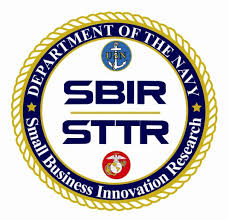The Navy’s top acquisition official on Monday spoke about how the service is trying to help small businesses weather the issues caused by the COVID-19 pandemic by pushing out more awards directly and indirectly.
The office of Naval Research Small Business Innovation Research (SBIR) programs are “taking a 90-day surge challenge for us. They’re intent is to award $250 million in SBIR contracts in the next 90 days, doubling up their awards they planned to do in the next 60 days,” Assistant Secretary of the Navy for Research, Development and Acquisition James Geurts said during a small business webinar hosted by the Navy League.

Last week, ONR first announced the $250 million in upcoming awards to help sustain the defense industrial base during the pandemic (Defense Daily, April 28).
In an email to Defense Daily, director of the Department of the Navy SBIR/STTR programs Bob Smith elaborated ONR actually plans to award $261 million, 45 percent more than originally planned. It will be tied to almost 700 contract actions.
Smith said the $261 million figure includes both planned and surged efforts. He also noted ONR is not dispersing the funds itself, which will be dispersed by the System Commands participating in the Navy SBIR program. The Navy’s Focused Contracts Center of Excellence at Lakehurst, N.J., is executing the awards.
Earlier in April, Geurts said ONR has already obligated about $1.5 billion, increasing its previously planned awards schedule by almost an additional 50 percent.
On Monday, Guerts noted ONR has also been contacting all of the Navy’s early performers to to understand where they have issues or may need risk adjustments due to the pandemic.
“All of this aimed to prove to you…that we are in this together, that we’re partners and that we are relying on you to help us get through this crisis,” Geurts continued.
He said the focus of SBIRS and other small business innovative contract teams has been on reducing the overhead, or “flash-to-bang” rate.
“I gave pretty strict guidance to our teams to accelerate and our ONR team has been taking the charge…so they’re doing an awesome job. Part of that will be trying to connect with the emerging talent out there in the workforce.”
Geurts told reporters following the event one way they’ve increased contract efficiency with small business contracts is moving straight to Phase 3 SBIR awards.
“It’s a competitive award, and you can award it directly. The Navy is by far the largest user of Phase 3 SBIRs so rather than tying up all these resources for a long RFP and response period, going right to a Phase 3 SBIRS is another way to both get efficiency and speed, both of which we’re looking for.”
Smith added ONR has spent the past year “working hard to simplify the program, improve our processes to move faster, and ensure our SBIR efforts delivered more impactful technical solutions. That’s why we were able to accelerate what is normally a five-month process (getting a solicitation ready) and get it on the street in under two weeks. That’s why we are seeing contracts awarded in under 30 days.”
Geurts also said the Navy is making sure funding for prime contractors is filtering down to the more vulnerable small businesses and subcontractors.
“I get regular reporting from the larger primes on how much they’ve pushed out into their subs. I’m not looking at detailed numbers on a daily basis, although I am talking to small businesses regularly and getting their feedback from it.”
He noted particularly in the ship repair area, a lot of funding was tied in legacy contracts that had not fully settled yet.
“So settling out those repair contracts was really important because that had tied up a lot of the money in the small businesses area. And we’re also looking at the kinds of contracts to make sure where there are contracts that are really impactful, we’ve got those prioritized accordingly,” Geurts told reporters.
He underscored last week’s $187 million contract to Huntington Ingalls Industries [HII] for long-lead time materials and associated design activities for LHA-9 will largely help smaller subcontractors. LHA-9 will be the fourth America-class large deck amphibious assault ship (Defense Daily, May 1).
“That’s almost exclusively going to suppliers because that’s long-lead materials and so that’ll be an immediate infusion…because most of the prime contract dollars in that are on the construction side of things.”
Geurts said the entire effort is multi-dimensional: “some via the prime through supply chain for more traditional hardware kinds of things and then many directly to the small businesses for small business and emerging technology activities.”